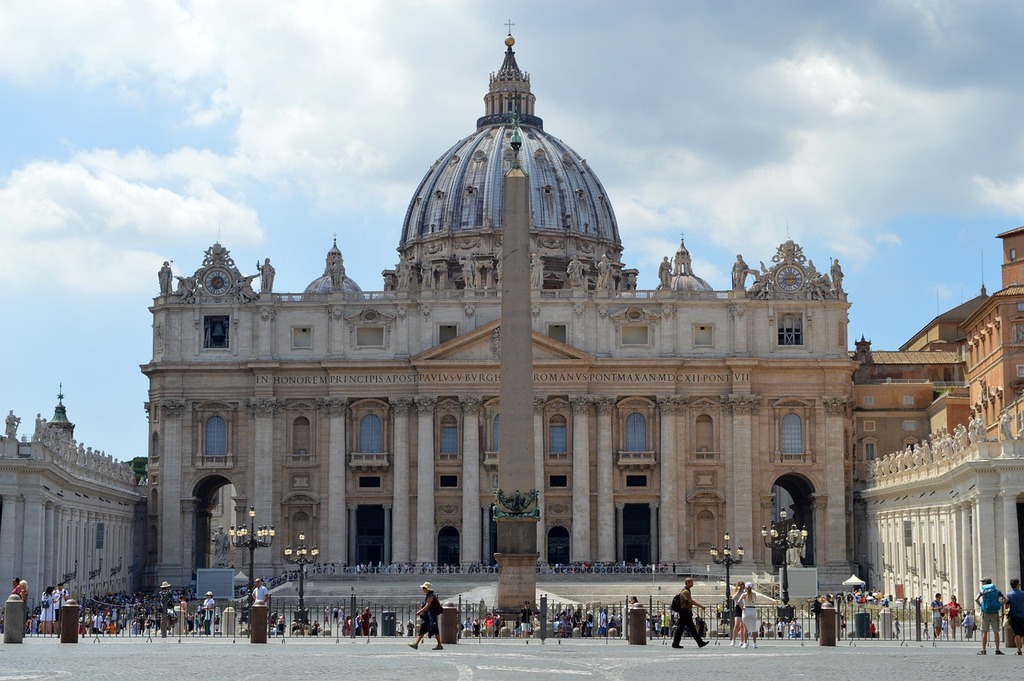
Baroque Churches of Rome: A Journey Through History
Baroque architecture has always had a very special appeal. It is that particular type of artistic expression of the 17th century that followed the Renaissance and Mannerism. At the time, it was not a term considered positive, but those expressions that were not particularly regular, sober and orderly were defined as Baroque. Most Neoclassicists, probably influenced by Enlightenment rational thought, defined them as such, thus giving them a negative connotation.
The aim of Baroque architecture was in fact to amaze the spectator with very sinuous shapes and vivid colours. However, in some countries such as France, England and later Italy, the influence of ancient and Renaissance styles can be observed. The period in which this trend seems most evident has been defined as Baroque classicism. There are however currently several conflicting theses regarding the origin of this style, but they are not the subject of this article.
There is a lot of information online about the Baroque style, but not everyone knows (and I am telling you this from personal experience) that the Baroque is a movement that originated in Rome and that, throughout the 17th century, played a leading role in the art of this wonderful city. It was strongly stimulated by the desire of the patron Popes to express their desire for a Lutheran counter-reformation and specifically, for churches to follow the explicit dictates of the Council of Trent.
Many years have passed since I was amazed by this style at a young age, I was in Rome and decided to follow a tour that would show me some examples of this brazen artistic expression that I loved so much. When it is possible and if you are a site, I urge you to leave your cave, village or city for a while to enjoy it too. The world is a wonderful place and it is a pity to reduce it only to your own micro reality.
Baroque church tours in Rome
There are countless tours that can be purchased or done on your own. Some of these last only a few hours, others may last even more than a day. I advise you to consider a paid tour with professional guides, after all, this is one of those things you don't do every day. In this regard, you only need to have a look around on search engines to get the possibility of booking some (subject to the current situation of course). What I recommend, however, is the following.
Start at Piazza Navona, which is universally recognised as the most beautiful Baroque square. The church of Sant'Agnese in Agone, the church of Sant'Ivo alla Sapienza, the church of Sant'Andrea al Quirinale, the church of San Carlo alle quattro fontane, the Ponte Sant'Angelo, the church of Santa Maria della Vittoria, the church of San Francesco a Ripa, the Galleria Borghese the church of San Luigi dei francesi, the basilica of Santa Maria del Popolo, the Capitoline museums, the national gallery of ancient art in Palazzo Barberini, the basilica of Sant'Andrea della Valle, the church of Sant'Ignazio, the church of Santa Maria della pace and the basilica of San Giovanni dei fiorentini.
This short and incomplete tour leads us to think that the style of a church cannot be traced solely and exclusively to the date of its first construction. In fact, the oldest buildings have always undergone modifications and restorations that allow us to appreciate a great variety of styles even in a single structure.
The tour I proposed earlier is not, however, the only one you can take. To those who do not know Rome and who are greedy for information, I reiterate the fact that you should entrust a local professional guide.
There are numerous Baroque churches, chapels and basilicas in Rome and this cannot be an exhaustive article. However, we will list the ones that, in our humble opinion, are the most interesting.
Basilica of San Giovanni Battista dei Fiorentini
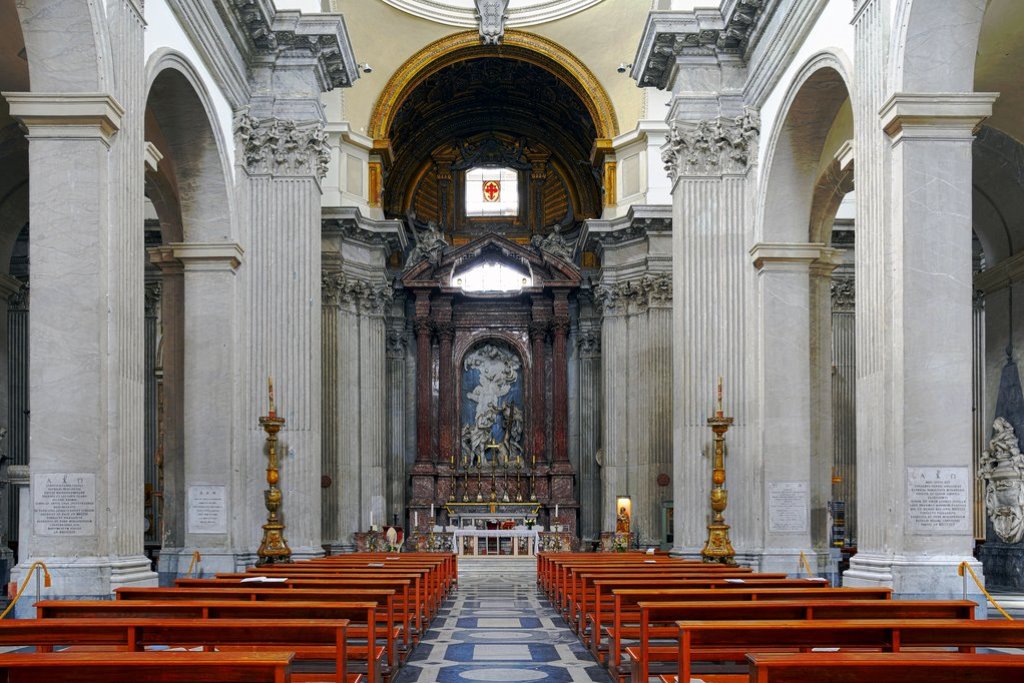
The Basilica di San Giovanni Battista dei Fiorentini is a Baroque church located in the heart of Rome, in the Prati district, near the Tiber river. Built between 1585 and 1734, the basilica is the place of worship of the Florentine community in the capital.
Its imposing façade, designed by Giambattista da Cortona, is distinguished by its elegance and the use of classical elements that characterise the Baroque style.
Inside, the church is rich in works of art, including frescoes and sculptures by artists such as Carlo Maratta and Giambologna, which enrich the solemn and sacred atmosphere of the place.
The basilica is also famous for its panoramic location and proximity to iconic sites such as Castel Sant'Angelo. A fascinating site for those seeking a combination of spirituality, art and history.
Basilica of Sant'Andrea della Valle
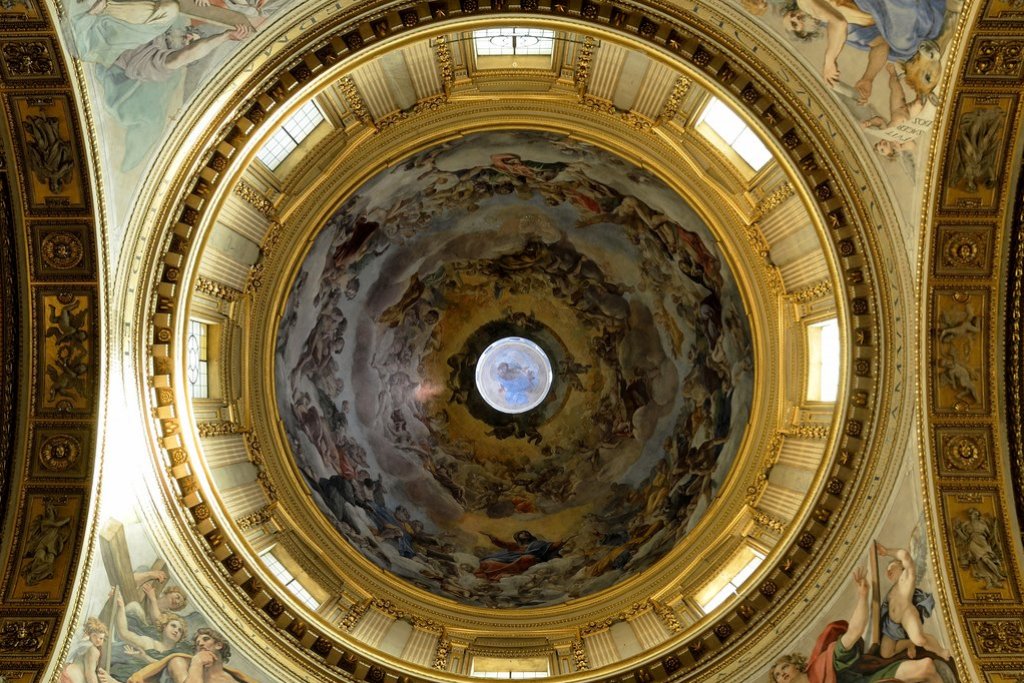
The Basilica of Sant'Andrea della Valle is one of the most majestic Baroque churches in Rome, located in the Sant'Eustachio district, not far from Piazza Navona. Built between 1590 and 1650 to a design by the architect Girolamo Rainaldi, the basilica is famous for its grandiose architecture and magnificent interior, characterised by an imposing dome, the second highest in Rome after St. Peter's.
The façade, in late Renaissance style, is enriched by an elegant portico and statues of saints and martyrs. The interior is a masterpiece of Baroque art, with frescoes and pictorial decorations of great value, such as those by Giovanni Lanfranco, adorning the dome and the vault.
The church is also known for the presence of works by sculptors such as Filippo Della Valle. Moreover, Sant'Andrea della Valle is famous for being the place of origin of numerous historical and cultural events, including the first performances of operas by composers such as Giacomo Puccini, including ‘Tosca’. A place of great charm for those who love art, history and music.
Basilica of Sant'Andrea delle Fratte
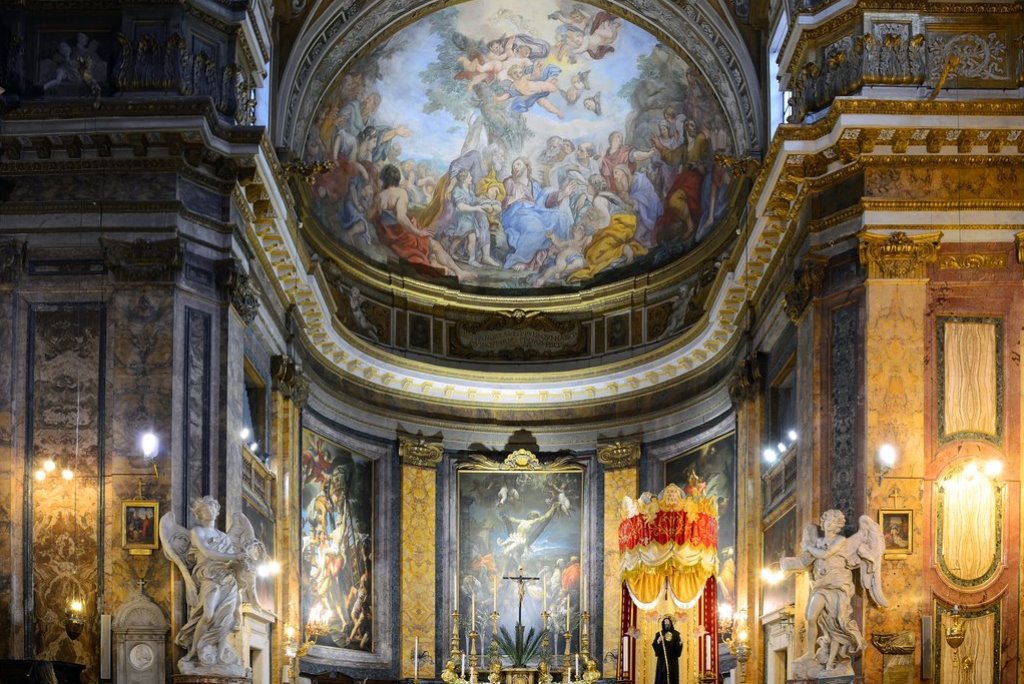
The Basilica of Sant'Andrea delle Fratte is a Baroque church located in the heart of Rome, near the Spanish Steps. Founded in the 13th century and rebuilt between 1625 and 1650 to a design by Gian Lorenzo Bernini, this basilica is famous for its fascinating façade and richly decorated interior.
The church houses a masterpiece of sculpture: Bernini's two angels, which adorn the high altar and are considered among his most elegant and striking works.
The interior of the basilica has a Latin cross plan, with a frescoed dome and numerous Baroque decorative details. Other notable works of art include frescoes by Giovanni Lanfranco and paintings by artists such as Giambattista Gaulli.
The basilica is also known as the burial place of several important people, including Cardinal Giovanni Battista. A place of great spirituality and beauty, perfect for those seeking a combination of art, history and serenity in the centre of Rome.
Basilica of St Eustace
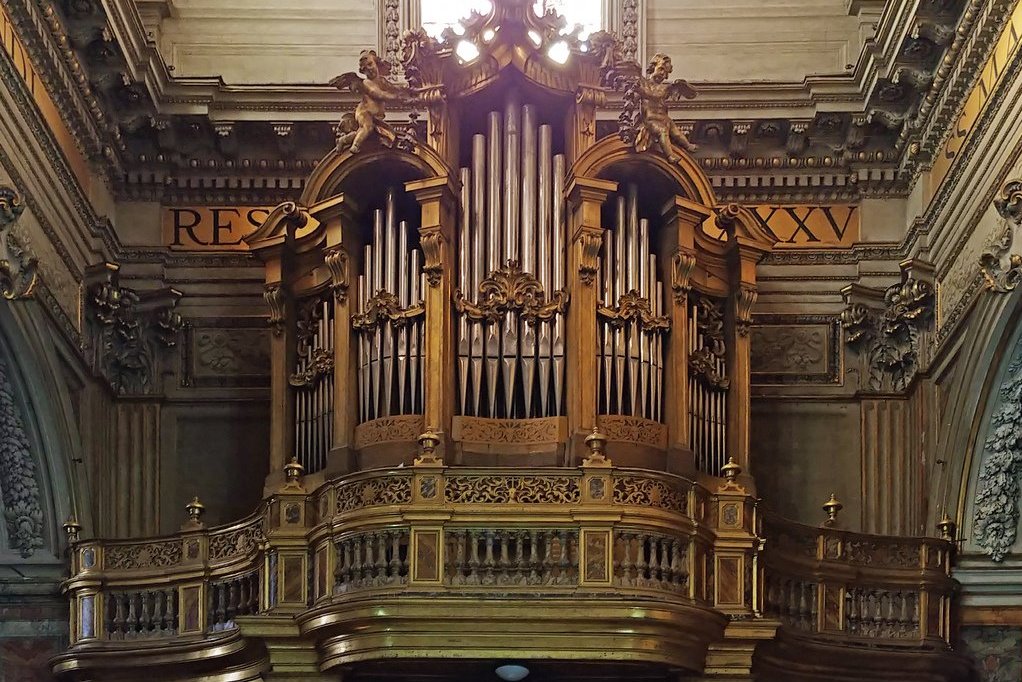
The Basilica di Sant'Eustachio is a church located in the heart of Rome, in the district of the same name, a few steps from Piazza Navona. Founded in the 9th century and renovated in the Baroque style in the 17th century, the basilica is famous for its sober elegance and its history linked to the martyrdom of Saint Eustace, the patron saint of hunters.
The church has an imposing Renaissance-style façade and an interior rich in works of art, including frescoes and paintings decorating the side chapels. One of the most significant elements is the high altar, which houses a painting depicting the scene of the conversion of St. Eustace, painted by the painter Pierre Subleyras.
The basilica is also famous for its medieval bell tower and quiet atmosphere, making it an ideal place for a spiritual and cultural break in the bustling centre of Rome. A site that combines history, art and devotion, perfect for those wishing to explore one of the lesser known but fascinating corners of the city.
Basilica of Santa Maria in Domnica

The Basilica of Santa Maria in Domnica, located in the Celio district of Rome, is one of the oldest and most impressive churches in the city.
Dating back to the 5th century, it was built over an ancient Roman house and dedicated to St. Mary and St. Sixtus. The church is famous for its extraordinary history, linking it to early Christianity and its location near the famous Colosseum and the Caelian Park.
The interior of the basilica contains splendid medieval mosaics, including a magnificent 6th century mosaic depicting the Madonna and Child, as well as frescoes and decorations that testify to the church's artistic evolution over the centuries.
The gilded wooden ceiling is another valuable feature. The basilica is also known for its tranquillity, making it an ideal place for a spiritual break away from the tourist hustle and bustle.
A fascinating site for those interested in the religious history and ancient art of Rome, Santa Maria in Domnica offers an authentic and intimate experience of discovery.
Church of Saints Claudius and Andrew of the Borgognoni
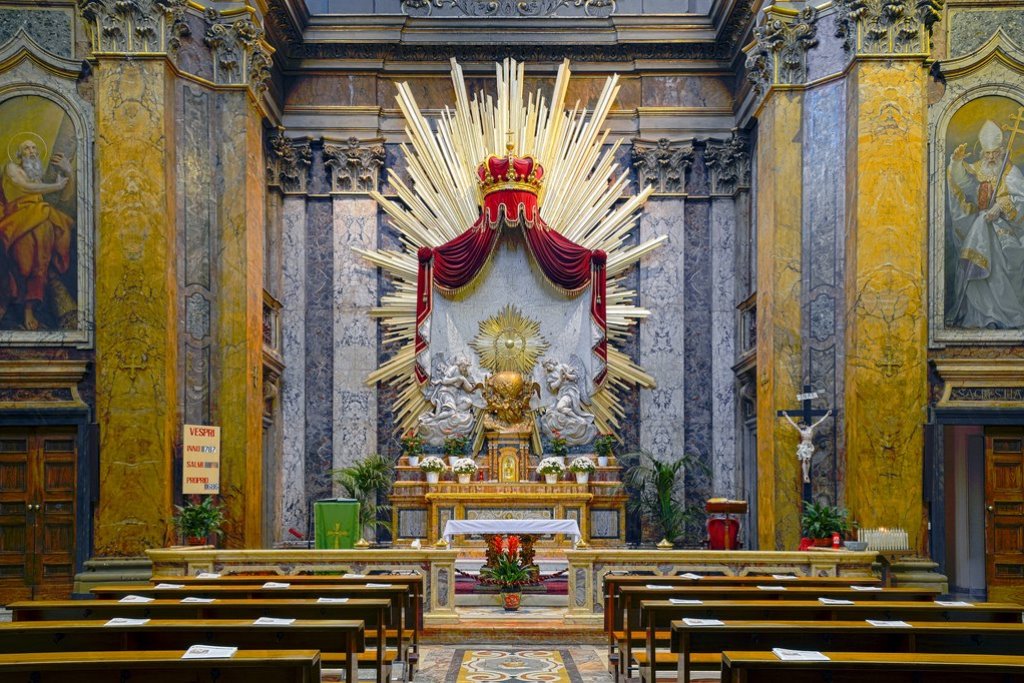
The Church of Santi Claudio e Andrea dei Borgognoni is a small and charming church located in the historical centre of Rome, along Via del Corso, near Piazza Venezia.
Built in the 17th century, this Baroque church was erected by the confraternity of the Borgognoni, which grouped the faithful from Burgundy, a region of France. The simple and sober façade conceals an interior rich in artistic works of considerable value.
The interior of the church has a single-nave floor plan, with altars decorated with frescoes and sculptures that bear witness to Roman Baroque art. Among the most significant works is the high altar, which houses an altarpiece depicting Saints Claudius and Andrew, the work of local artists.
The church is also a place of great tranquillity, far from the flow of tourists, where you can admire an example of 17th century spirituality and art. A hidden corner of historic Rome, perfect for those seeking a peaceful break in the heart of the city.
Church of the Most Holy Name of Mary at the Trajan Forum
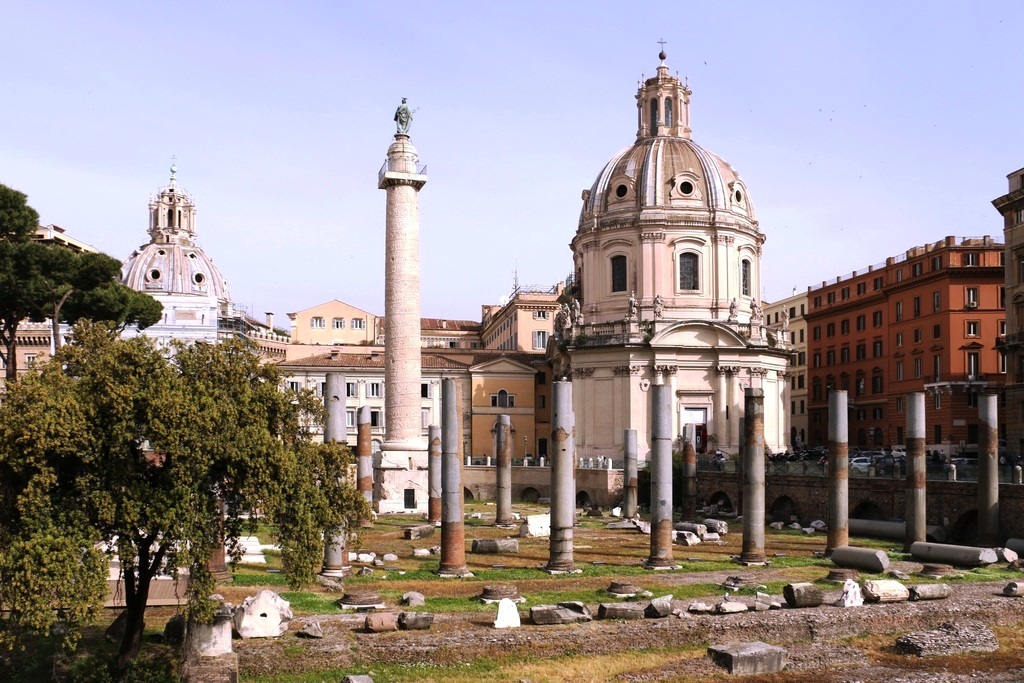
The Church of the Most Holy Name of Mary at the Trajan Forum is a Baroque church located in the heart of Rome, near the Trajan Forum and the famous Trajan's Column.
Built between 1702 and 1705 to a design by architect Carlo Fontana, this church was erected to celebrate the Most Holy Name of Mary, the patron saint of the Congregation of the Somaschi Fathers. The simple but elegant façade is distinguished by its portal and two side columns framing the entrance.
The interior is rich in Baroque decoration, with a single nave housing numerous frescoes and stuccoes. The high altar is dominated by a large canvas representing the Holy Name of Mary, the work of local artists.
Although small in size, the church offers a quiet and recollected atmosphere, far from the tourist hustle and bustle, and is an excellent example of Baroque architecture and art. Its strategic location makes it an ideal reference point for those wishing to explore historic Rome, combining art, history and spirituality.
Church of San Carlo ai Catinari
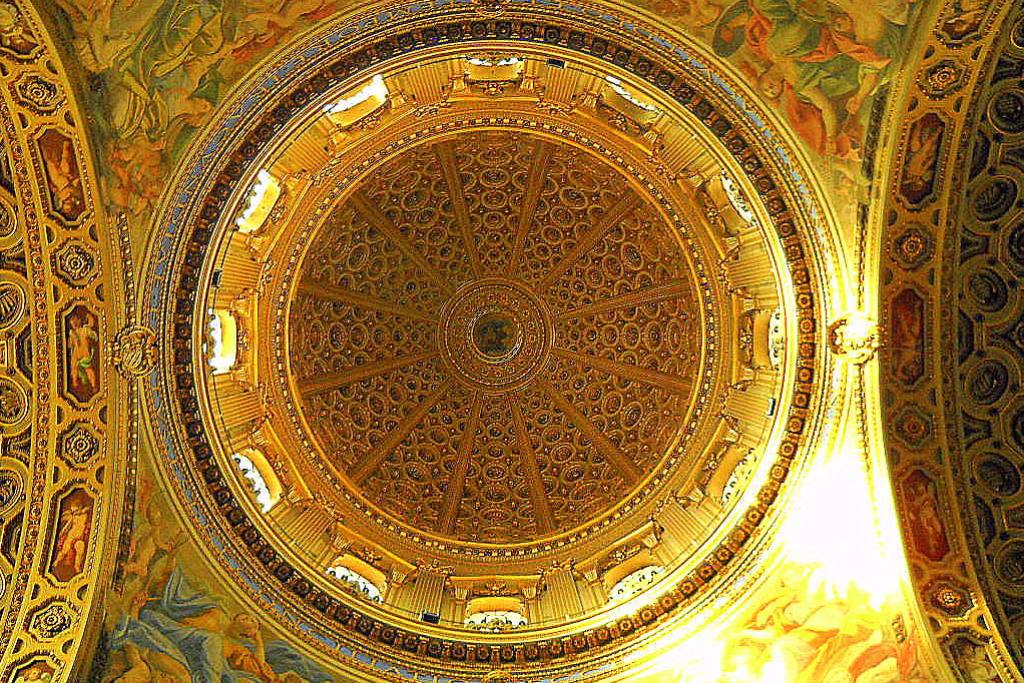
The Church of San Carlo ai Catinari is a small and charming Baroque church located in the heart of Rome, in the Sant'Angelo district, near Campo de' Fiori. Built between 1612 and 1637 to a design by architect Francesco Borromini, the church is one of the most significant examples of his art.
The small but elegant façade is characterised by a double order of columns and a Greek cross plan that reflects the influence of the late Renaissance.
Inside, the church presents one of the most evocative and harmonious spaces in Rome, with a single nave decorated with stuccoes and frescoes. The high altar houses a canvas depicting Saint Charles Borromeo, the titular saint, and is surrounded by a series of masterpieces by artists of the period.
The frescoed ceiling and stucco decorations contribute to the solemn and cosy atmosphere. The church is an ideal place for a quiet visit, away from the tourist crowds, and offers an interesting insight into Baroque architecture and Roman spirituality.
Church of San Carlo alle Quattro Fontane
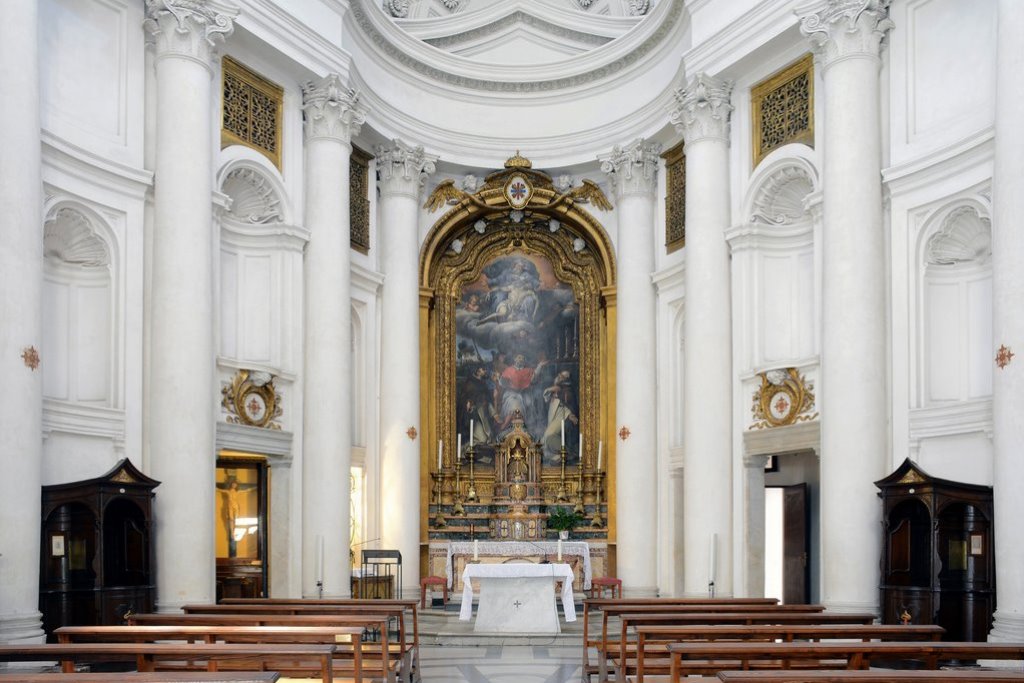
The Church of San Carlo alle Quattro Fontane is one of the masterpieces of Roman Baroque architecture, designed by Francesco Borromini between 1638 and 1641. Situated in the
Trevi district, in a striking location where four streets and four fountains converge, the church is famous for its unusual and innovative plan in the shape of a double ellipse, reflecting the genius of its architect. The simple but elegant façade is one of the purest expressions of the Baroque style, with its curved and undulating lines.
The interior, small in size but extraordinarily impressive, features a ceiling frescoed with geometric motifs that create the illusion of architecture in motion. The play of light and shadow, typical of Borromini's style, makes the atmosphere intimate and spiritual.
The church also houses the sepulchre of St Charles Borromeo, the patron saint of the place, and other Baroque works of art. Perfect for those who wish to immerse themselves in the history of Roman art and architecture, San Carlo alle Quattro Fontane is a fascinating and meaningful corner.
Church of San Luigi dei Francesi
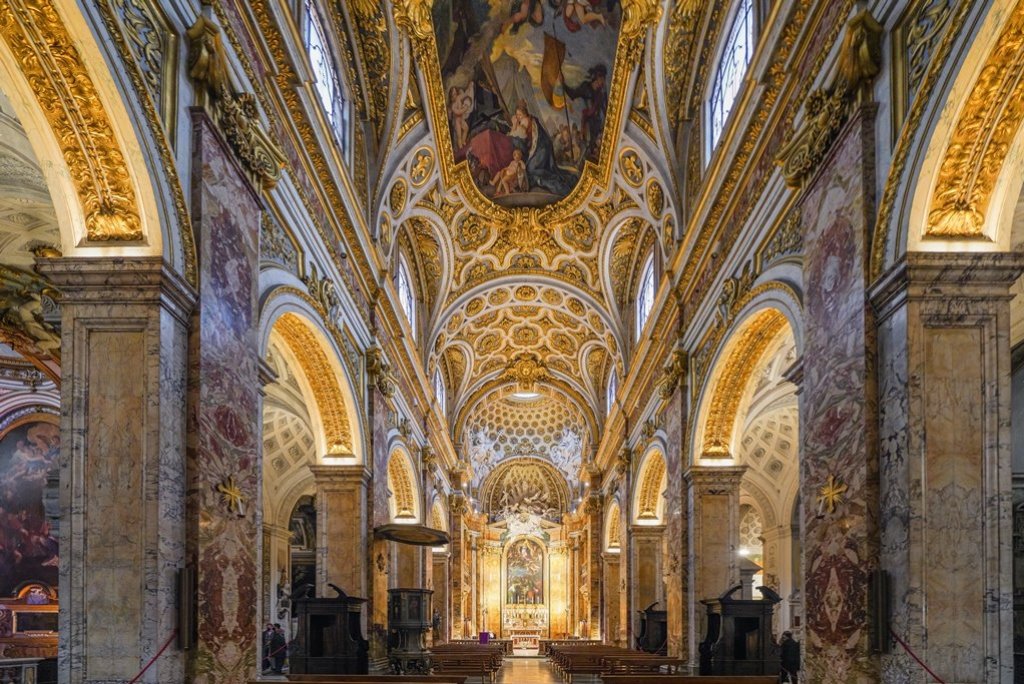
The Church of San Luigi dei Francesi is one of Rome's main churches, located in the Ponte district, a few steps from Piazza Navona. Founded in 1589 to accommodate the French community in the city, the church is a magnificent example of Renaissance and Baroque architecture.
Its simple but elegant façade is the work of Giacomo della Porta, while the richly decorated interior offers a spectacle of sacred art and spirituality.
San Luigi dei Francesi is particularly famous for housing some of Caravaggio's most famous works, including the three canvases decorating the Contarelli chapel, depicting scenes from the life of St. Matthew.
These works, among the master's most important, are one of the main reasons that attract tourists and art lovers from all over the world. The church is also known for its intimate and cosy atmosphere, allowing visitors to enjoy one of the most fascinating artistic experiences in Rome.
Church of St Nicholas of Tolentino
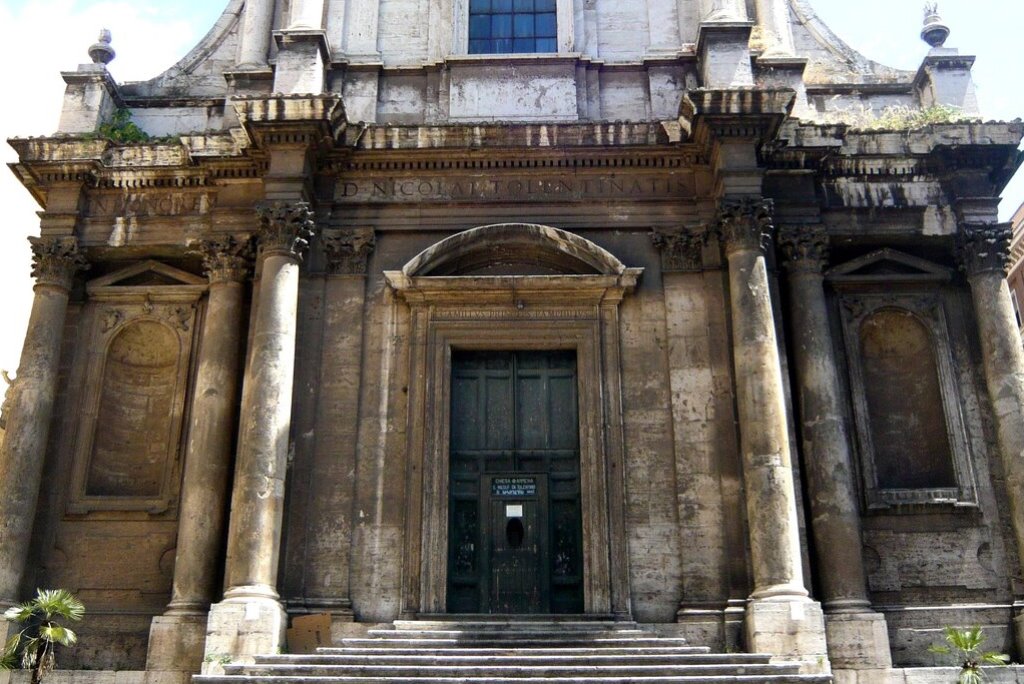
The Church of San Nicola da Tolentino is a historical Baroque church located in the Monti district, a short distance from Termini station. Founded in the 13th century, the church is dedicated to St Nicholas of Tolentino, an important Augustinian saint.
The richly decorated interior of the church features numerous works of art, including frescoes, stucco work and sculptures, which testify to the influence of Roman Baroque.
The church is famous for its peaceful atmosphere and its imposing high altar, which houses a valuable work of art. Its side chapels also contain important paintings and sculptures, adding to the beauty of the building.
The church is also known for its connection with the Augustinian Order and for the preservation of the relics of St Nicholas of Tolentino, which attract pilgrims and devotees. A fascinating place, rich in history and art, ideal for a spiritual visit in the heart of Rome.
Church of Sant'Agnese in Agone
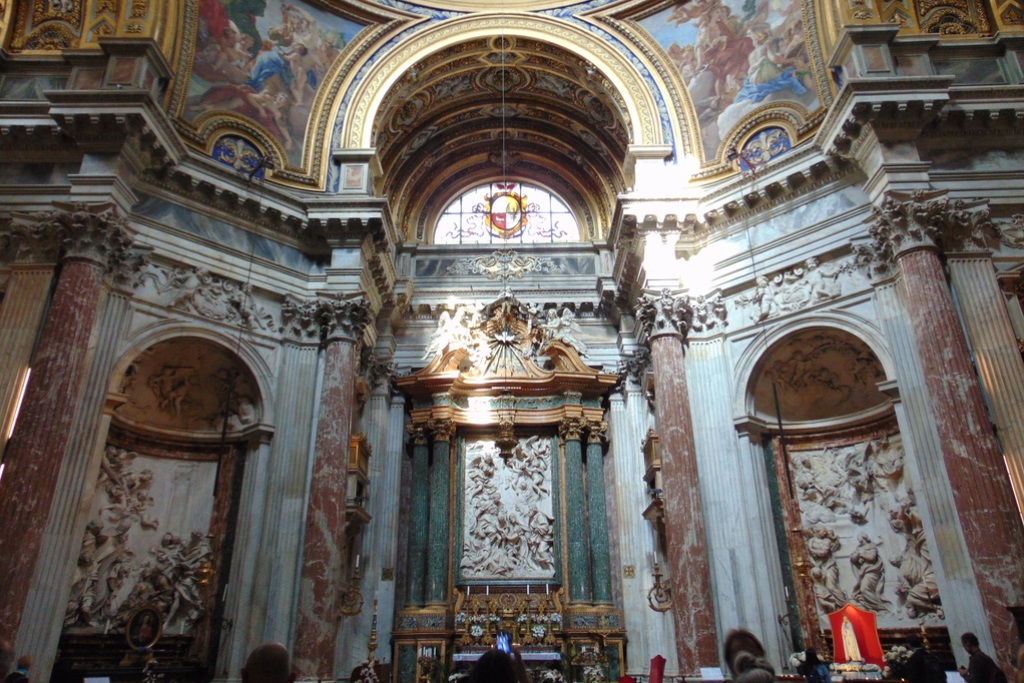
The Church of Sant'Agnese in Agone is a splendid Baroque church located in the heart of Rome, in Piazza Navona, one of the city's most iconic squares. Built between 1652 and 1672 to a design by Francesco Borromini and Gian Lorenzo Bernini, the church is dedicated to St Agnes, a 3rd-century Christian martyr, and stands on the site where, according to tradition, the saint suffered martyrdom.
The elegant and dynamic façade is the work of Borromini and blends perfectly with the surroundings of the square. The interior is richly decorated with stuccoes, frescoes and works of art, including the high altarpiece by Ciriaco d'Ancona. The church also houses the tomb of the Pamphili family, who commissioned the building, and an extraordinary frescoed ceiling that contributes to the solemn and evocative atmosphere.
Sant'Agnese in Agone is one of the most fascinating churches in Rome, perfect for those who wish to immerse themselves in Baroque art and spirituality while exploring one of the city's most beautiful squares.
Church of Sant'Andrea al Quirinale
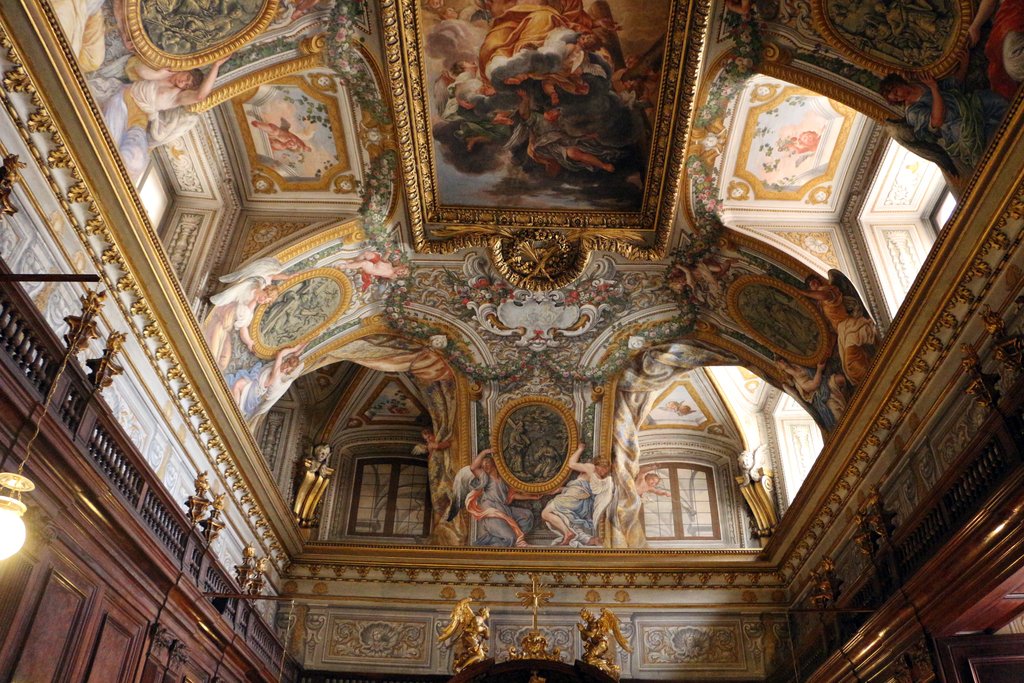
The Church of Sant'Andrea al Quirinale is one of Rome's Baroque masterpieces, located on top of the Quirinale, one of the seven hills of Rome. Designed by Gian Lorenzo Bernini between 1658 and 1670, this church is one of his most significant works and a perfect example of Baroque architecture.
Its central plan, in the shape of an ellipse, and its imposing façade, characterised by a single large central window, make it a building of extraordinary elegance. The interior of the church is equally magnificent, with a single nave centred around the high altar, surmounted by a frescoed dome depicting the triumph of Saint Andrew.
The stucco decoration, the frescoes by Francesco Cozza and the delicate play of light and shadow contribute to creating a mystical and solemn atmosphere. Sant'Andrea al Quirinale is a place of great beauty and tranquillity, ideal for those who wish to admire one of the finest works of Roman Baroque and enjoy a panoramic view over the city.
Church of Sant'Ignazio di Loyola in Campo Marzio
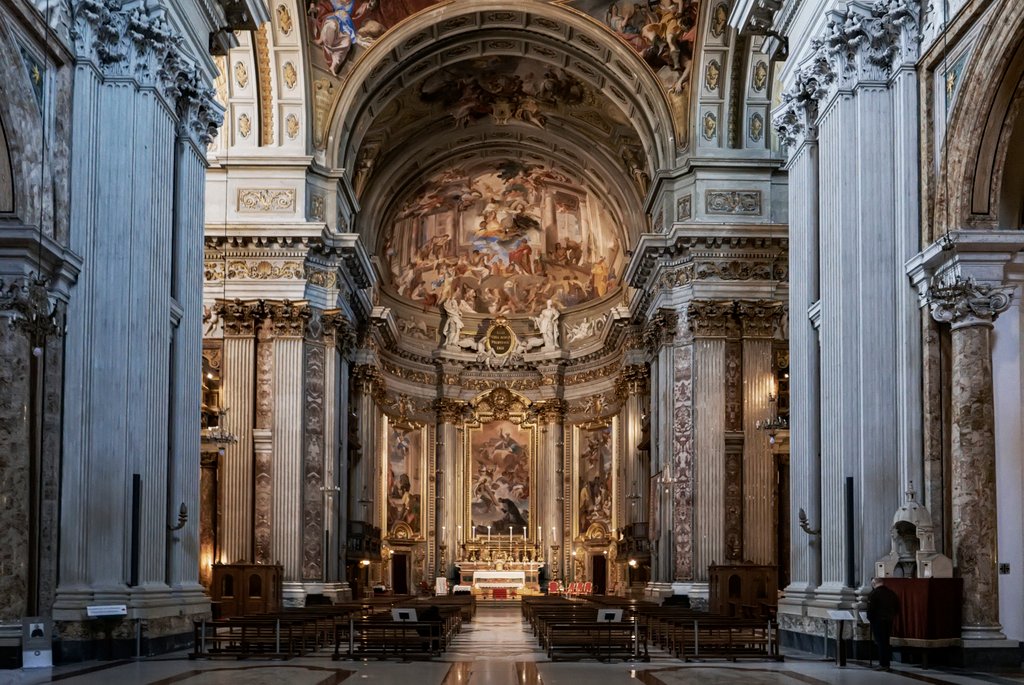
The Church of Sant'Ignazio di Loyola in Campo Marzio is one of the most beautiful Baroque churches in Rome, located a few steps from Piazza della Rotonda, near the Pantheon. Built between 1626 and 1650, it is dedicated to Saint Ignazio of Loyola, founder of the Society of Jesus. The church is a magnificent example of Baroque architecture, with an imposing façade and a richly decorated interior.
The interior is famous for its extraordinary frescoed ceiling by Andrea Pozzo, which creates an optical illusion of an immense dome that does not actually exist, a masterpiece of perspective. The nave houses the high altar, under which is the tomb of Saint Ignazio, while the side chapels are decorated with valuable works of art.
The church is also famous for its bell tower and the serene atmosphere that makes it a place of reflection and spirituality. Sant'Ignazio di Loyola is an ideal destination for those who wish to immerse themselves in the artistic and religious beauty of Rome.
Church of Sant'Ivo alla Sapienza
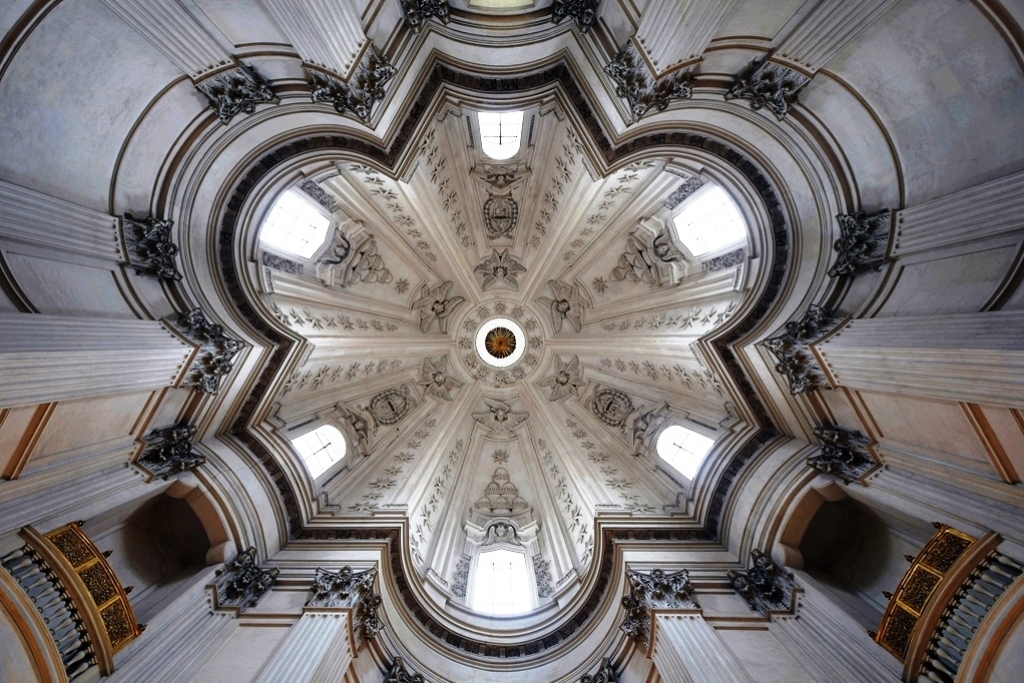
The Church of Sant'Ivo alla Sapienza is one of Rome's Baroque gems, located in the heart of the city, within the La Sapienza University complex. Designed by Francesco Borromini between 1642 and 1660, this church is famous for its extraordinary architecture, which combines innovation and harmony.
The star-shaped ground plan and the characteristic dome with its soaring Gothic spirit, which sweeps upwards, are among the distinctive features of the design.
The interior is equally fascinating, with a single nave decorated with stuccowork and frescoes of great value. The church also houses works by Giovanni Francesco Grimaldi and a high altar celebrating Saint Ivo, the patron saint of jurists.
The use of light, which penetrates through large windows, and the originality of the structure make Sant'Ivo alla Sapienza a place of great beauty and spirituality, perfect for those who wish to admire Borromini's genius and the magnificence of Roman Baroque.
Church of Santa Maria dei Miracoli
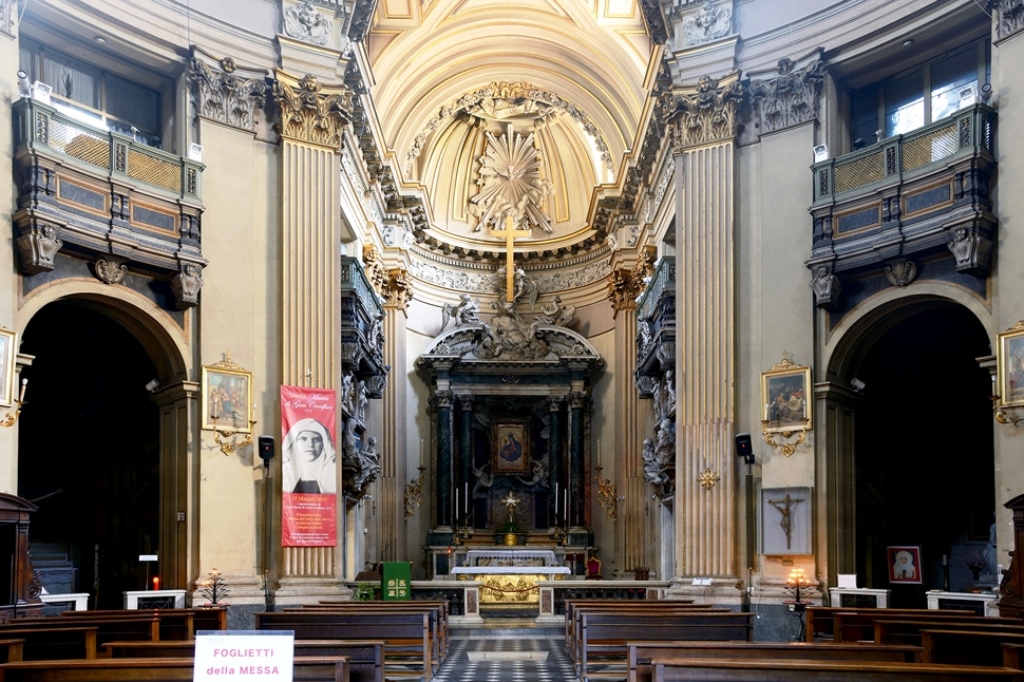
The Church of Santa Maria dei Miracoli is one of two twin churches located in Piazza del Popolo in the heart of Rome, built between 1675 and 1681 to a design by architect Giacomo della Porta. This Baroque church, dedicated to Our Lady of Miracles, is distinguished by its elegant façade, enriched with Corinthian columns and a large central window, which gives the entire building a luminous effect.
The interior of the church is decorated with frescoes, stucco work and side altars that bear witness to the Baroque art of the period. The nave, with its frescoed ceiling, houses a high altar dedicated to Our Lady of Miracles, who is said to have performed numerous miracles.
Although small in size, the church offers a quiet and solemn atmosphere, and is perfect for a spiritual visit or to admire the beauty of Roman Baroque art. Together with the nearby Church of Santa Maria in Montesanto, it forms a magnificent architectural balance in the square.
Church of Santa Maria di Loreto

The Church of Santa Maria di Loreto is a Baroque church located in the centre of Rome, near Piazza Venezia, between the Trajan Forum and Trajan's Column. Built between 1507 and 1625, the church is dedicated to Santa Maria di Loreto, whose sanctuary is one of the most important pilgrimage sites in Italy.
The church façade, in an elegant Baroque style, is distinguished by its large portico and Corinthian columns.
The interior, with a central plan, is charmingly decorated, with a magnificent high altar and works of art from different eras, including frescoes and stuccoes. The church also houses an important chapel with a statue of Our Lady of Loreto, which makes this place of worship particularly significant for devotees.
Santa Maria di Loreto is a quiet corner of the city, ideal for those who want an experience of art, history and spirituality in the heart of Rome.
Church of St. Susanna at the Baths of Diocletian
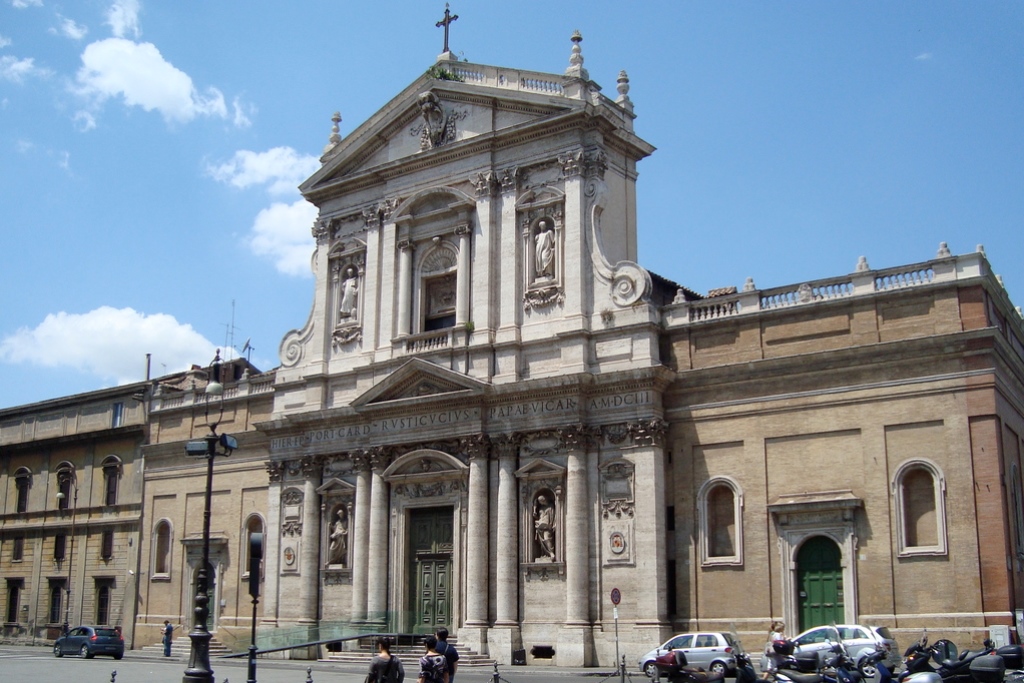
The Church of St. Susanna at the Baths of Diocletian is a historic Baroque church located in the Quirinale district, near Termini Station and inside the ancient Baths of Diocletian, one of the largest and most impressive bath complexes in ancient Rome. The church, dedicated to Saint Susanna, a Christian martyr, was built in 1585 to a design by architect Carlo Maderno and completed with an elegant façade in late Renaissance style.
The interior of the church has a single nave decorated with frescoes and stuccoes, among which is the high altar with a painting by Guido Reni depicting Saint Susanna. The church is also known for its connection to the American community in Rome, as it was the seat of the Apostolic Nunciature of the United States for many years.
Its location near the ruins of the thermal baths and the tranquillity of its surroundings make Santa Susanna an ideal place for a cultural and spiritual stopover, immersed in the history of ancient and Baroque Rome.
New Church
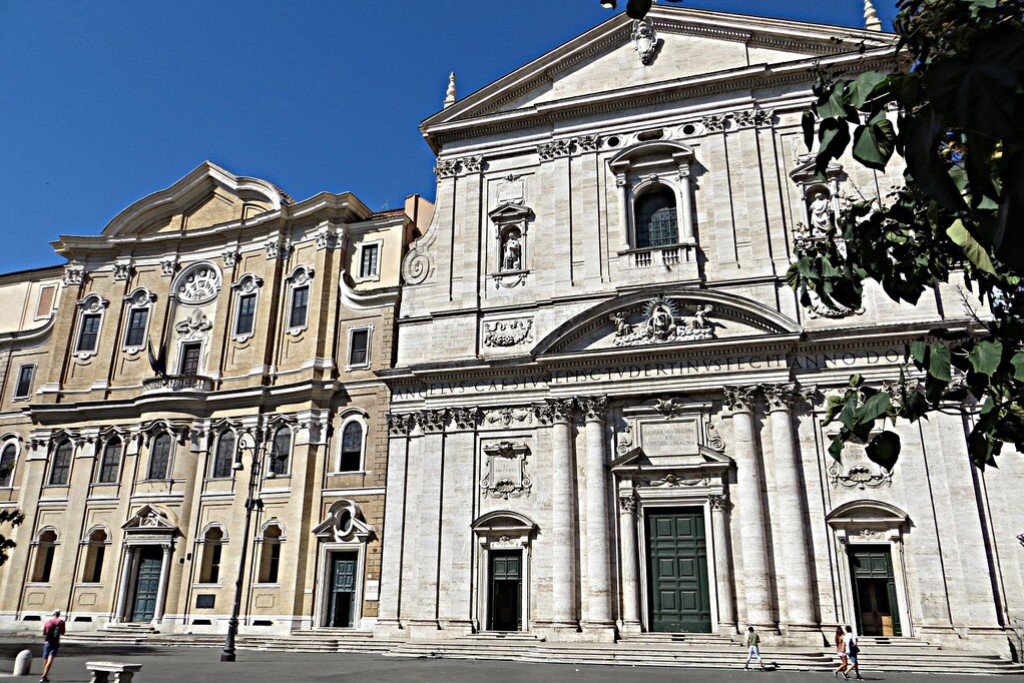
The Chiesa Nuova, officially the Church of Santa Maria in Vallicella, is one of the most important Baroque churches in Rome, located in the Parione district, a few steps from Piazza Navona. Founded in 1575 by the priest Filippo Neri, founder of the Congregation of the Oratory, the church was designed by Giuseppe Valadier and completed in 1605.
The church's majestic and imposing façade is a perfect example of Renaissance and Baroque architecture, with a large portal and Corinthian columns.
The interior is extraordinarily rich in art, with frescoes and works by artists such as Giovanni Lanfranco and Guido Reni adorning the side chapels. The church is also known for its large dome and the high altar housing a Madonna on the throne, an object of popular devotion.
Santa Maria in Vallicella is also famous for its connection with St Philip Neri, whose memory is celebrated with a small altar dedicated to him. The Chiesa Nuova is an ideal place to immerse yourself in the Baroque art, spirituality and religious history of Rome.
St Peter's Dome

St Peter's Dome is one of the most iconic symbols of Rome and the Vatican City. Designed by Michelangelo Buonarroti in 1547 and completed in 1590 by Giuseppe Valadier, this majestic dome dominates the skyline of Rome and offers a breathtaking panoramic view of the city and St. Peter's Square.
At 136.57 metres high, it is the largest dome in the world and one of the grandest examples of Renaissance and Baroque architecture.
Visitors can climb to the top of the dome, either via a long staircase of 320 steps or by taking a lift halfway up, to enjoy one of the most spectacular views of Rome. From the top, one can admire St. Peter's Square, the basilica below and, on a clear day, a panorama as far as the Roman hills.
The interior of the dome is decorated with frescoes by Pietro da Cortona and Gian Lorenzo Bernini, which contribute to making it a masterpiece of sacred art. The ascent to the dome is a unique experience for anyone wishing to discover one of the most significant religious buildings in the world.
Basilica of Santa Maria sopra Minerva
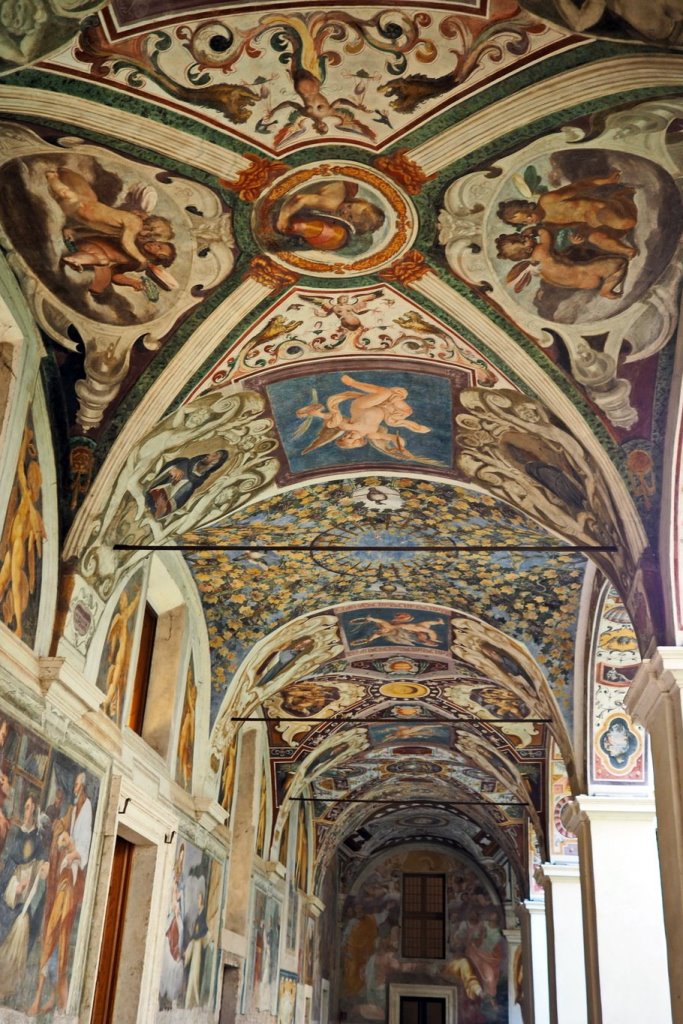
The Basilica of Santa Maria sopra Minerva is one of the most fascinating churches in Rome, located in the Pigna district, a few steps from the Pantheon. Founded in the 13th century over an ancient temple dedicated to Minerva, the church is a splendid example of Gothic architecture with Renaissance and Baroque elements. Its simple and sober façade, in contrast to the richness of its interior, opens onto a bright and harmonious nave.
The interior of the basilica is known for its beauty and spirituality, with works of art of great value. Among the most famous is Michelangelo's Statue of Christ of Minerva, which is located on the high altar. The church also houses one of the most extraordinary chapels in Rome, the Carafa Chapel, with frescoes by Filippino Lippi and Fra Angelico.
Santa Maria sopra Minerva is also the Roman seat of the Dominican Order and houses numerous tombs of important historical figures, including that of the famous theologian St. Thomas Aquinas. The basilica is a place of great serenity and beauty, perfect for a visit that combines art, history and spirituality.
Oratory of the Filippini
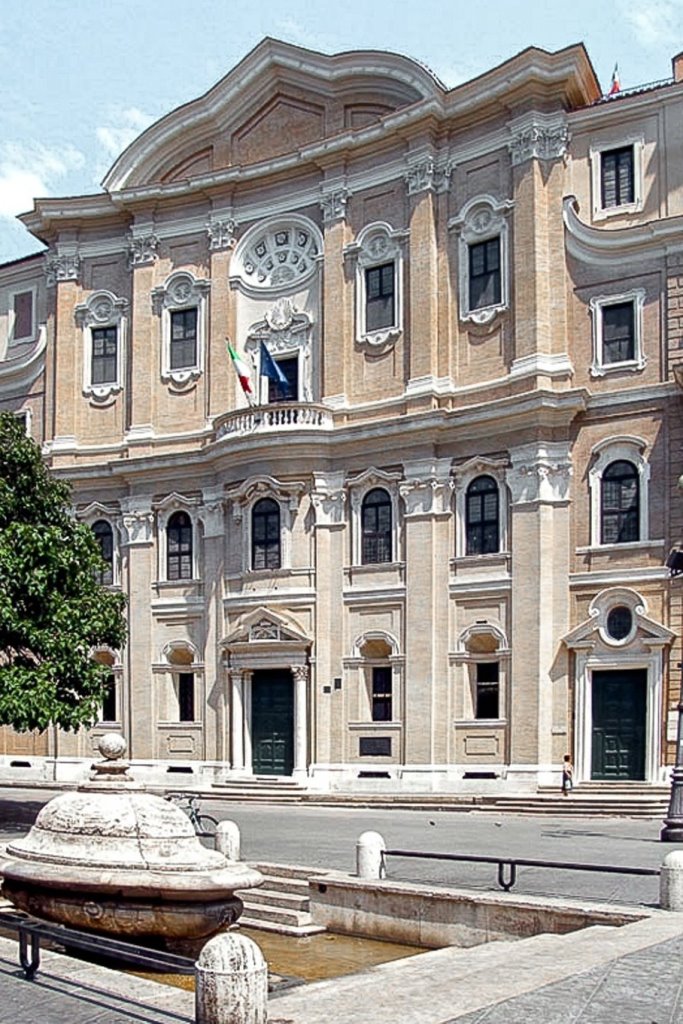
The Oratorio dei Filippini is a fascinating Baroque building located in the Prati district, near St. Peter's Square. Built between 1565 and 1585 and designed by architect Gian Lorenzo Bernini, the oratory is one of the places of worship linked to the Congregation of the Filippini, founded by St. Philip Neri.
The building is known for its elegant façade, reflecting the Baroque style of the time, with a series of Corinthian columns and a large portal. The interior of the oratory is equally impressive, characterised by an atmosphere of intimate spirituality.
The main nave is decorated with frescoes and stuccoes, which enrich the ambience and make it evocative. An interesting aspect is its educational function, linked to the Congregation's mission to promote Christian devotion and education.
Although the Oratory is not one of Rome's best known tourist destinations, it offers an authentic and peaceful experience, perfect for those who wish to discover the city's spirituality and Baroque art.
Enjoy your trip!
Our roundup of baroque churches in Rome ends here. If I have not made any mistakes, by visiting you will be able to appreciate at least one element of this fabulous style.
Remember that in the article I have attached google maps that give you the possibility to reach the place by navigator, look at the photographs, images, other places of interest and possible needs that are nearby. Plan your trip well before you leave.






















